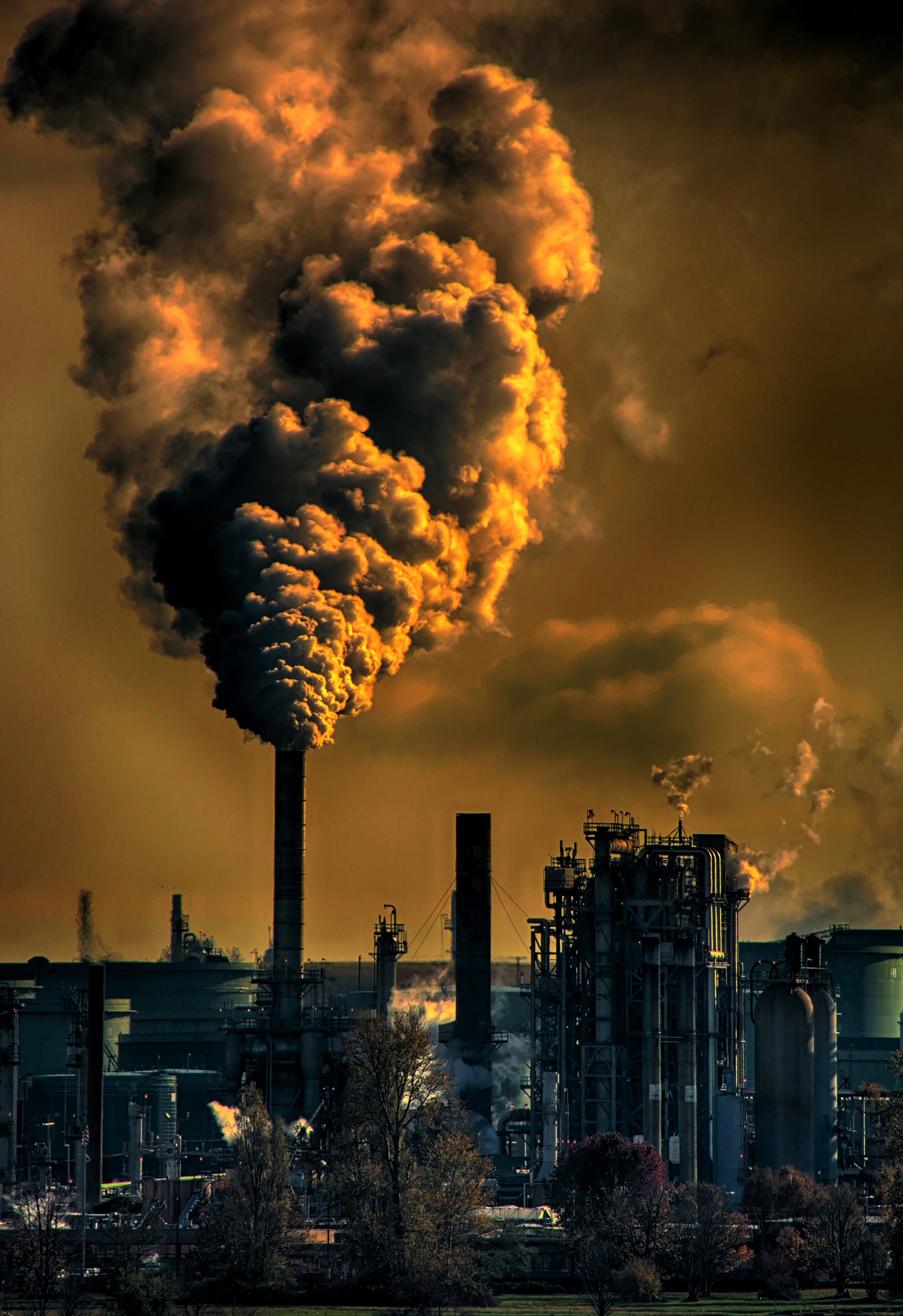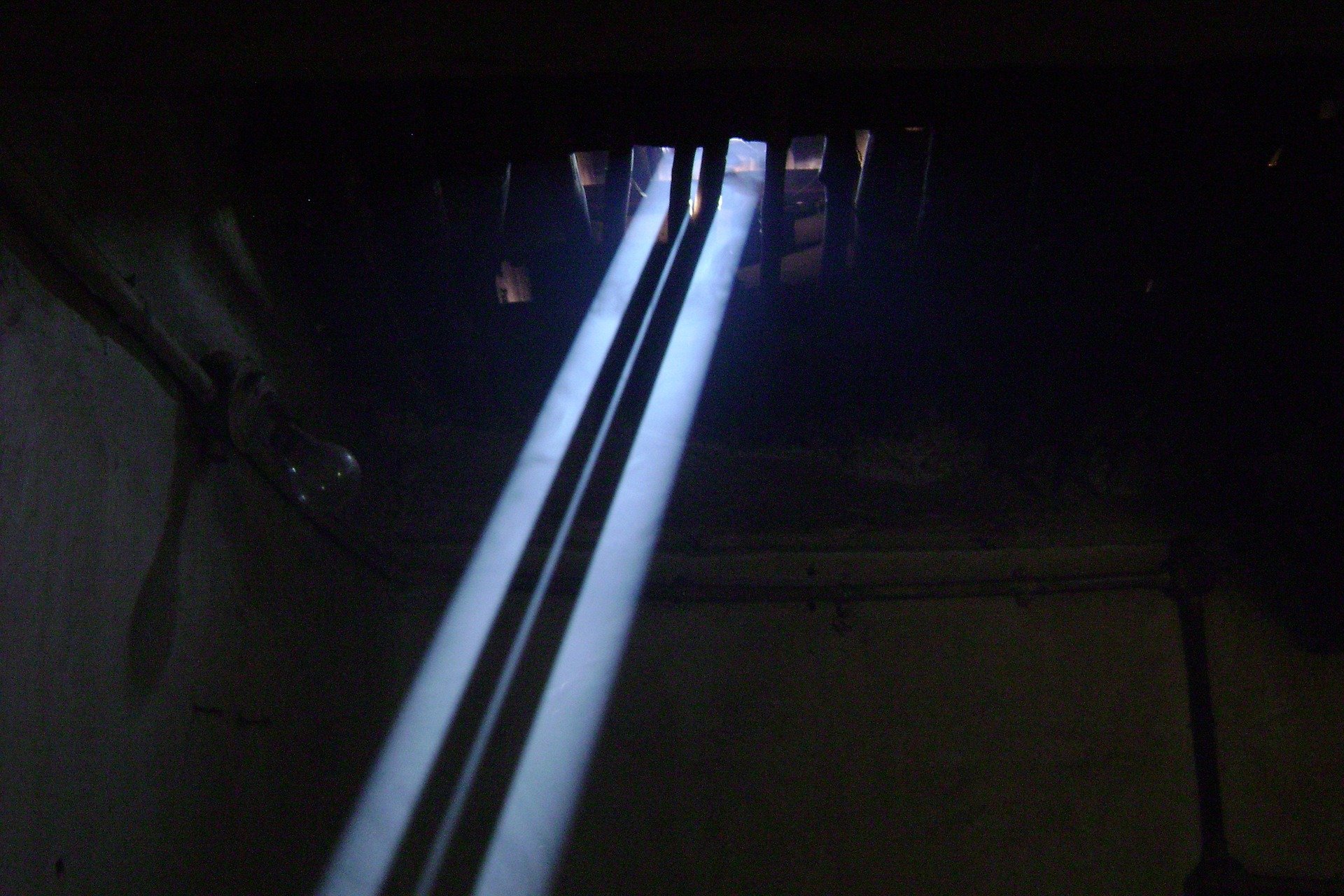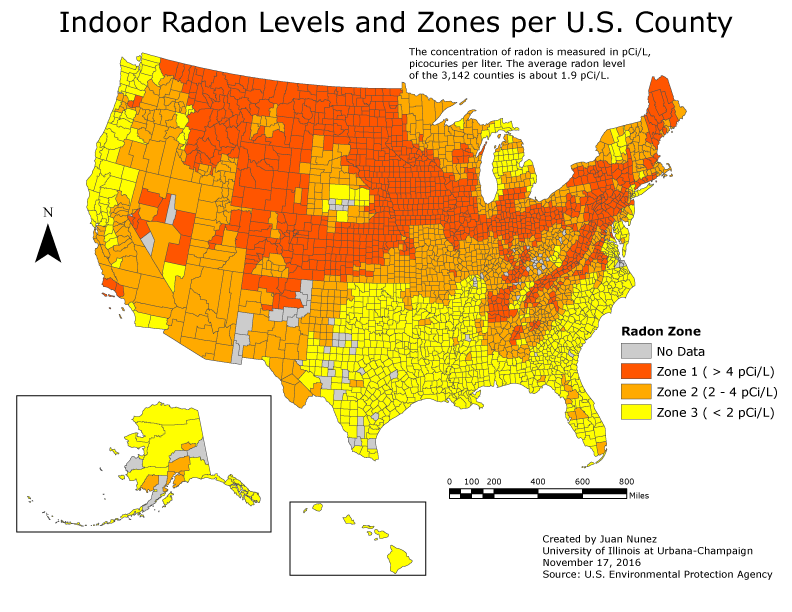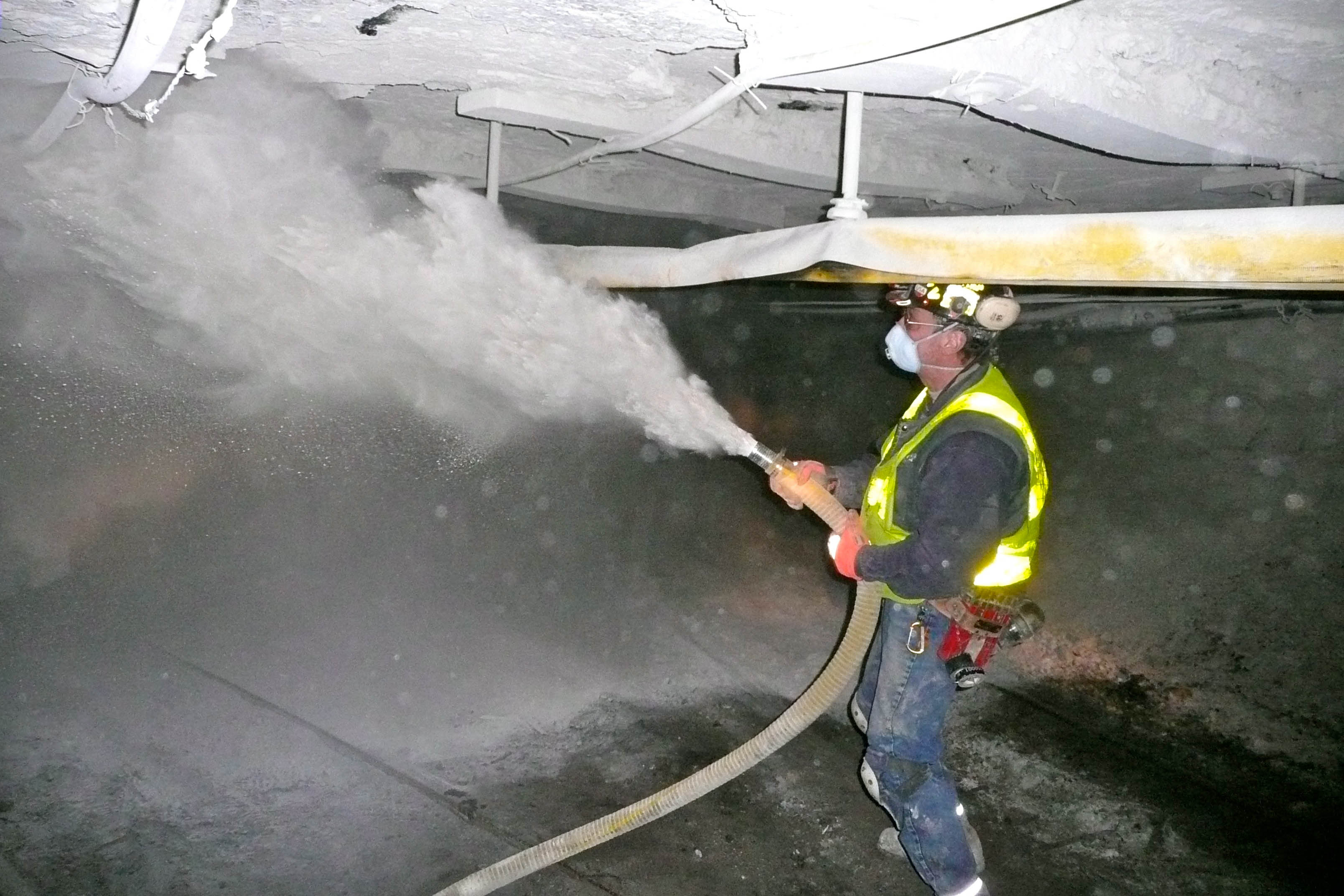COPD is a disease usually associated with smokers, which makes sense when smoking is the cause of approximately eighty to ninety percent of COPD cases. However, smoking is certainly not the only way you can get COPD, and there are many other lesser-known causes.
Being exposed to just about any kind of respiratory irritant over long periods of time can cause you to develop COPD. Things like dust, smog, mold, fine airborne particles, and toxic gases can result in serious lung and airway inflammation that, over the years, can cause COPD.
{{cta('fa8abc2a-1e88-4fa3-82fd-1cb5b9ed43b2','justifycenter')}}
People who suffer from certain diseases, such as asthma and alpha-1 antitrypsin deficiency, also have a greater risk of developing COPD. These diseases have the potential to cause permanent damage to your lungs, leading to breathing problems later in life.
Even if you develop COPD related to smoking, it is possible that smoking is not the sole cause. If you suffer from asthma, have a history of frequent respiratory infections, or had frequent exposure to other respiratory irritants, these factors could combine with the damage caused by smoking and result in COPD.
It's important to know that COPD has many different causes, and that not everyone who develops COPD is a current or former smoker. The risks of pollution, dust, and other respiratory irritants are very real, and they can cause people who have never smoked or touched tobacco to develop the disease.
If more people are informed about the non-smoking causes of COPD, then more people will have the knowledge they need to protect their lungs from respiratory irritants and make lung-healthy choices throughout their lives. This could not only prevent thousands of new cases of COPD, but could also foster more understanding and compassion for those who already suffer from the disease.
Characteristics that Raise Your Risk for COPD

One of the first things that crosses many people's minds when they get a COPD diagnosis is, “how did this happen?” or “why did this happen to me?” While you may not ever be able to answer that question definitively, understanding all the potential causes may help give you some insight and closure.
Aside from the diseases and respiratory irritants we've mentioned, there are other factors that can put you at risk for COPD. For a variety of different reasons, things like your age, sex, medical history, genetics, and other personal characteristics can increase your likelihood of developing COPD.
While these things may raise your risk of sustaining lung damage and developing COPD later in life, these are usually not direct causes of COPD. These factors in combination with exposure to other COPD causes (such as smoking or exposure to toxic gases) is what ultimately causes you to get COPD.
If you or a loved one is already suffering from COPD, then understanding the causes of the disease can help you prevent the existing COPD from getting worse. If you are lucky enough to be untouched by COPD, then knowing the causes can help you avoid taking risks that increase your chances for developing the disease.
COPD Results from Cumulative Lung Damage Over a Lifetime

There are many different causes of COPD, and many of them are preventable. That's why it's important to understand what they are and what you can do to avoid them.
But first, it's important to understand that COPD is caused by repeated, long-term exposure to things that irritate and damage your lungs. These irritants can be things like smoke, chemical fumes, and even simply dust, but what causes COPD is accumulated damage over time.
That's why there is often not just one culprit, but a collection of potential causes that leads someone to develop COPD. Because of this, preventing COPD is a matter of making hundreds or thousands of small, healthy choices and making an effort to avoid harmful substances throughout a lifetime.
For instance, sitting around a campfire on occasional camping trips is very unlikely to cause long-term damage to your lungs. However, sitting around a campfire every night for months at a time, or working a job that requires you to be around a fire for hours a day, could cause permanent lung damage and significantly raise your risk for developing COPD later in life.

In the following sections, we're going to take a closer look at some of the most common non-smoking causes of COPD. We'll cover everything from toxic substances and respiratory irritants to diseases that are known to damage your lungs and cause COPD.
As you read through these next sections, remember that a single exposure or even years of exposure to any of the risk factors below does not mean that you will develop COPD. It goes the other way, too; if you have COPD, the fact that you were exposed to one of these risk factors does not necessarily mean that it is what caused your disease.
COPD is a complex disease that is difficult to diagnose and it is often difficult to find the root cause of specific cases. The causes listed below are not definitive triggers for COPD, but rather risk factors that increase your likelihood for developing COPD in the future.
Causes of COPD: Exposure to Air Pollution

In the modern age, pollution is everywhere; it comes from your car, local businesses, industrial activity, and even appliances in your home. We all know that air pollution is unhealthy, but many people underestimate the damage it can do to your lungs.
What we usually think of as “air pollution” or “smog” is actually a mixture of a variety of harmful gases and particles that irritate your lungs when you breathe them in. These pollutants can destroy healthy lung tissue, cause chronic respiratory problems, and cause you to develop COPD over time.
Studies show that these environmental and indoor pollutants can cause serious damage and may play a larger role in COPD than previously thought. That's why it's important to know the common sources of air pollution and how to keep your lungs safe.
Local Air Quality
.jpg)
When most people think of air pollution, the first thing they think of is smog, or the smoky haze that often fills dense cities and industrial areas. While everyone knows that air pollution is bad for your health, many people underestimate the damage that breathing polluted air can have on your lungs over a lifetime.
Smog is made up of harmful gases and tiny airborne particles that get lodged deep in your lungs when you breathe. Over time, this can cause serious respiratory symptoms and permanent lung damage that results in COPD.
Here is an overview of some of the major respiratory irritants found in smog:
- Ozone gas
- Tiny airborne particles (from dust, smoke, and other sources)
- Volatile organic compounds (VOC's)
- Nitrogen oxides
- Sulphur dioxide
{{cta('b59df0c1-c4de-47a8-8e1c-0d33d4b414aa','justifycenter')}}
One of the most dangerous pollutants is ozone, which is created when fumes from cars, factories, and other sources react with sunlight in the earth's atmosphere. The ozone that forms then sinks to the ground, sometimes miles away from the original source of pollution.
Ozone is a very reactive, volatile gas that “aggressively attacks” healthy tissue when it enters your lungs. Even relatively small amounts of ozone can be dangerous, raising your risk of heart disease, stroke, and respiratory disorders like COPD.
People who live in areas like big cities that have poor outdoor air quality have a significant higher risk of COPD, lung cancer, and other respiratory disorders as a result. However, your local air quality is affected by a variety of different factors, including temperature and humidity, and it may vary significantly from day to day.
Smog is most common in urban areas with lots of traffic, commercial activity, or industrial pollution. However, things like forest fires and weather patterns can spread polluted air far away from its source.
To protect yourself from poor outdoor air quality, make sure you check your local air quality forecast on a regular basis, especially before spending an extended period of time outside. On days when pollution is high, try not to plan any outdoor activities, and close up your house to prevent your indoor air from becoming polluted as well.
For more tips on how to avoid the harmful gases and particles that pollute the air outdoors, check out our comprehensive guide on protecting your lungs from air pollution and smog.
Indoor Air Pollution

There are many different ways that the air in your home can get polluted, and most of them are avoidable. Things like smoke, particle pollution, and allergens like mold and pollen can all build up in your house and irritate your lungs when you spend time indoors.
Indoor pollution is an especially dangerous form of pollution because it collects in such a confined place and you get exposed to it for so many hours a day. If there are are any significant sources of pollution in your home, it can lead to serious lung damage and other health problems over time.
Appliances like stoves, gas-powered appliances, and fireplaces can also pose a problem if they aren't properly installed and maintained. That's why it's important to inspect your appliances regularly for malfunctions or improper venting and get them repaired promptly whenever you notice a problem.
It's also important to install enough smoke detectors and carbon monoxide detectors to detect harmful gases and smoke in every space in your house. To ensure your home is protected, it's important to keep them in good repair, which includes checking their batteries occasionally to make sure they still have charge.
The simplest ways to make sure your indoor air is healthy to breathe is to make sure your home is well-ventilated and free from mold, allergens, airway-irritating chemicals, and all forms of smoke. It's also important to keep all of your appliances maintained and avoid using fireplaces and wood-burning stoves as much as possible.
Here are some of the most common sources of indoor air pollution you should look out for:
- Stoves, heaters, fireplaces, and furnaces
- Small particulate matter (from dust and other sources)
- Secondhand smoke
- Carbon monoxide
- Allergens like pollen, dust mites, pet dander, bacteria, and mold
- Asbestos
- Radon
- Pesticides
For more practical tips, check out our comprehensive guide on how to improve the air quality in your home.
Wood-burning Stoves and Combustion Fumes

Using a wood-burning stove, fireplace, or furnace to heat your house is extremely risky because of the harm it can do to your lungs. Even when they are properly installed and vented, these appliances can still release harmful amounts of toxic chemicals and respiratory irritants into your home.
Wood smoke contains tiny particles that inflame your lungs when you breathe them in, which can lead to lung cancer and other breathing disorders like COPD with repeated exposure. Burning wood also releases toxic gases like carbon monoxide, nitrogen oxides, hydrocarbons, volatile organic compounds, formaldehyde, dioxins, acrolein, and more—all of which can damage your lungs and hurt your overall health.
Other common and oft-overlooked sources of combustion fumes include bonfires, fire pits, and BBQ grills. While these can be dangerous over a long period of time, you are unlikely to experience any long-term health effects from normal exposure; you are most at risk for COPD if you work around bonfires or grills for a living.

Burning wood or coal to heat your home is particularly dangerous because the fumes are contained indoors and present all day every day for extended periods of time. People who use a fireplace too often or rely on a wood-burning stove for heat are at serious risk for permanent lung damage and getting COPD later in life.
If you use a stove to heat your home, consider switching to a conventional gas or electric heating system for your house. If you do not have that option, there are special precautions you can take in order to reduce the amount of pollution that your stove leaks into your home.
Here are some tips to help you make your wood-burning stove more safe:
-
Use an EPA-certified wood-burning stove, furnace, or fireplace insert to reduce the amount of harmful fumes. This could reduce the pollution released into the air by up to 90% and make your wood go further, too. Check out this guide from the EPA's website to learn more about how to find a safer appliance for burning wood.
- Always use firewood that has been properly dried and seasoned because it produces much less smoke than wet wood. To be extra safe, you can check your wood by using a moisture meter, which you can find online or at some hardware and woodworking stores.
-
Always burn hardwoods instead of softwoods because they produce less smoke, burn slower, and make better firewood overall. To learn more about how to identify good firewood and soft versus hard types of wood, check out this helpful guide.
- Never burn wood that has been exposed to salt water or has been painted, processed, or treated with chemicals. That includes plywood, particle board, varnished wood, and trees exposed to pesticides.
-
Get your chimney, stove, and ventilation system inspected every year for build-up, leaks, and other problems. A blocked up chimney will cause more smoke to leak into your home and can even cause deadly fires and carbon monoxide poisoning.
- Don't use your wood-burning stove or furnace any longer than you need to. Turn it off when it is warm enough and do your best to keep your home insulated so you don't have to use it any more than necessary.
- Always make sure you have working smoke and carbon monoxide detectors installed all throughout your home. Always replace the batteries immediately when they go out and check them a couple times a year to ensure that they are functioning.
Even if you use an EPA-certified stove and follow all of the recommendations above, you could still be putting yourself and your family's health at risk by burning wood or coal in your home. For more information about the dangers of wood smoke, you can check out the Families for Clean Air website or this fantastic guide from the state of Washington's Department of Ecology.
Radon

Radon is a toxic, radioactive gas that seeps out of the ground and can be harmful to your lungs in large amounts. Because the gas is invisible and has no smell, the only way to detect it is to use a special radon detector.
Radon gas is most often associated with lung cancer, as it is the most frequent cause of lung cancer among people who don't smoke. However, many people don't realize that radon exposure can also damage the air sacs in your lungs, which can lead to respiratory problems and breathing disorders like COPD.
Children are more sensitive to radon than adults, even though the effects don't show up until much later in life. Smokers' lungs are also particularly sensitive to the damaging effects of radon, and a smoker's risk for lung cancer and COPD will be much higher than a non-smoker who is exposed to the same levels of radon gas.
Radon can be found anywhere, although levels vary significantly from place to place. Most people are exposed to radon when it leaks into their homes from the surrounding earth through their foundation or water pipes.
The best way to protect yourself from this toxic gas is to buy a radon testing kit or have a licensed radon inspector come to your home. It is also important to keep your home well-ventilated so that radon and other pollutants don't have a chance to build up to harmful levels indoors.
Because radon levels can fluctuate significantly over time in reaction to weather, seasons, and changes in the ground. Because of this, you have to monitor radon levels over several months or years in order to get an accurate picture of how much radon gas you get exposed to in your home.
Causes of COPD: Exposure to Dust, Chemicals, and Fumes
Besides common air pollutants, there are a variety of other substances that can irritate and damage your lungs. Things like cleaning chemicals, dust, and exhaust fumes can all cause COPD if you're exposed to them too often over a lifetime.
Workplace Exposure

There are many different jobs and occupations that can expose you to toxic chemicals, dust, and fumes that cause COPD. Because your job requires you to be around these harmful substances for dozens of hours a week, occupational exposure poses a substantially higher risk to your health than other forms of exposure.
Any job that exposes you to fine particles or noxious chemicals can put you at risk for COPD. Certain types of dust, including silica dust, mineral dust, coal ash, and dust from flour and grains are particularly dangerous for your lungs.
Here is a list of some of the harmful dusts and fumes found in workplaces that can do permanent damage to your lungs:
- Cadmium Dust
- Mineral Dust
- Silica Dust
- Organic Dusts
- Grain and Flour Dusts
- Cadmium Fumes
- Welding Fumes
- Petroleum and Diesel Exhaust Fumes
- Pesticides and Herbicides
Many of theses dusts and fumes come from vehicles, machinery, mining, materials, and manufacturing processes. Working in versatile fields like construction, manufacturing, and agriculture may expose you to several of these lung-irritant sources on a regular basis.
If you work in a high-risk occupation, you should take extra safety measures to protect your lungs. Make sure your workplace follows all the guidelines and requirements from the Occupational Safety and Health Administration (OSHA) and wear a dust mask or respirator around dust and machine fumes.

Even if you don't develop COPD, occupational exposure to lung irritants can cause a variety of other health problems. It may raise your risk for lung cancer, breathing problems, occupational asthma, and respiratory infections like pneumonia.
Here is a list of occupations that put you most at risk for COPD:
- Mining Workers
- Agriculture Workers
- Quarry Workers
- Brick-making
- Stonemasonry
- Rubber and Plastics Manufacturing
- Petroleum Workers
- Foundry Workers
- Dock Workers
- Cadmium Workers
- Welders
- Textile Workers
- Pottery and Ceramics Workers

